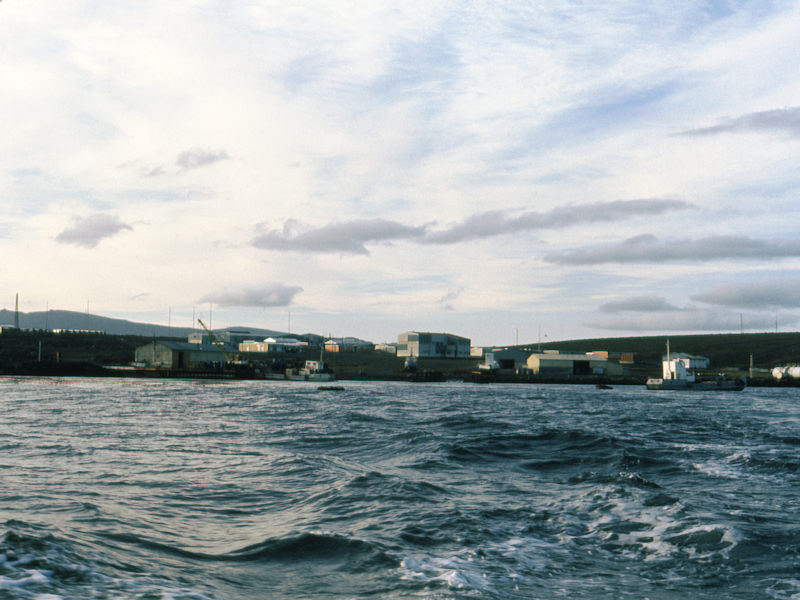
Photo album: "Arrival to Kerguelen"
Fly over a photo with the mouse to enlarge it
Click on a photo to open it in a new window
On Friday October 4th, 1974, we arrive in sight of the Kerguelen archipelago. We make a first stop off Pointe Suzanne to deposit equipment which will be used to construct an automatic measuring station. We start again on Monday October 7th, then Marion-Dufresne enter Golf of Morbihan and anchors in front of Port-aux-Français base. Later, we make a first tour of recognition of the places where we will work during the next six months.
 |
On October 4th, 1974, in the afternoon, we sail near the southern costs of Kerguelen archipelago. |
 |
We continue to sail along southern Kerguelen coasts. A mountain with snowy slopes. |
 |
The journey goes on and the weather changes rapidly during the day. |
 |
When we arrive in front of Pointe Suzanne, the sun is shining again, allowing us to admire the sight. The entrance of Golf of Morbihan is situated behind the dark foreland at left of the photo. |
 |
The helicopter is going to take off to carry the mail to Port-aux-Français base. |
 |
A pontoon is being deposited onto the water to transport the equipments to the shore. It will be towed by a motor boat of Marion-Dufresne. |
 |
At the beginning of the afternoon, Marion-Dufresne anchors in front of Port-aux-Français base. She cannot get alongside the wharf because of the shallow waters near the shore. |
 |
Sight from Géophy laboratory: A little farther, on lower ground, is the CNES base. It is from there that two Eridan French rockets and five ARCAS American smaller rockets will be launched. |
 |
Towards Golf of Morbihan, we perceive on the other shore, snow covered summits: on the left, on the background, the Mount Ross (1850 m) and, on the right, much nearer and much lower, "le Pouce". |
 |
The wind has sent the clouds away and a rainbow shows up with the return of the sun. |
.
.
.
.
.
.
.